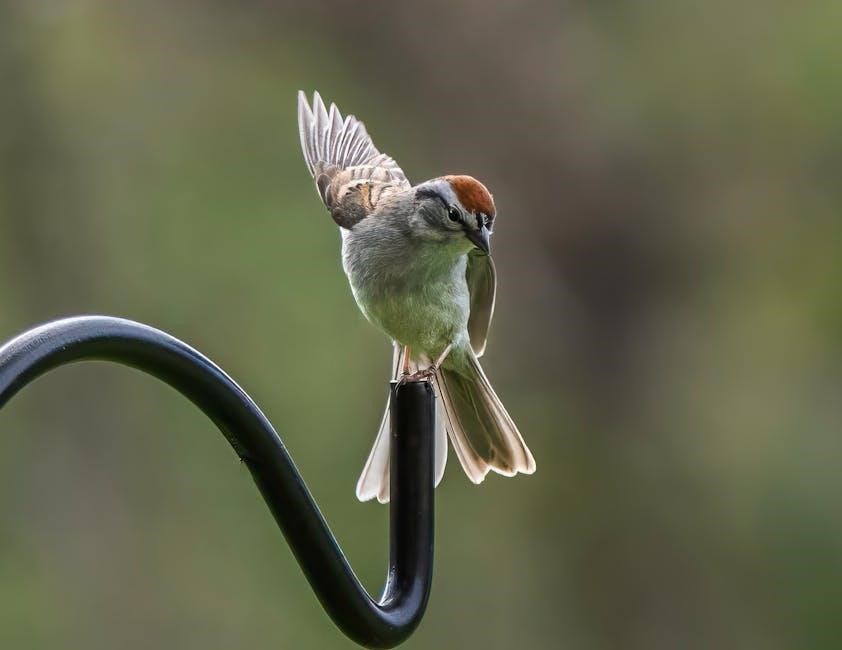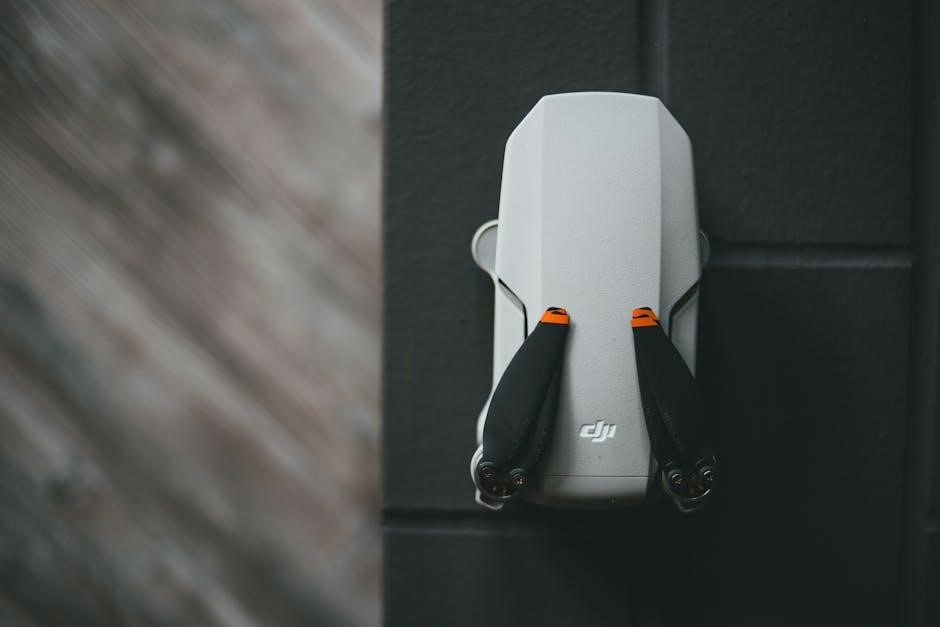Fly size is a critical factor in fly fishing, impacting the effectiveness of your presentation. This guide provides a comprehensive overview of fly sizes, hook sizes, and their applications for different fishing scenarios, ensuring anglers can make informed decisions to enhance their fishing success.
Understanding the Importance of Fly Size in Fly Fishing
Fly size plays a crucial role in fly fishing success, as it directly impacts how natural the presentation appears to trout and other target species. Larger flies may attract aggressive strikes, while smaller flies imitate the insects fish typically feed on. Selecting the right size ensures your fly matches the natural food sources available, increasing the likelihood of a strike. Proper sizing also affects casting accuracy and the fly’s behavior in the water, making it essential to understand and adapt to varying conditions and species preferences.
Hook Size Basics
Hook sizes range from large to small, with lower numbers denoting larger hooks. For example, size 2 is suitable for streamers, while size 22 is ideal for tiny flies.
How Hook Sizes Work
Hooks are sized inversely, meaning larger numbers indicate smaller hooks. For instance, a size 4 hook is much larger than a size 24. This system allows anglers to match hooks to specific fly types and fish species. Larger hooks, like size 2, are often used for streamers targeting bigger fish, while smaller hooks, such as size 22, are best for delicate dry flies. This sizing ensures the fly appears natural and appealing to fish.
Hook Sizes for Different Fly Types
Dry flies typically use sizes 12 to 24, with smaller sizes for more delicate presentations. Nymphs range from 10 to 18, often matching natural invertebrates. Streamers, imitating baitfish or leeches, use larger hooks, from 2 to 10. Terrestrials, like hoppers, are usually size 10 to 14. The hook size must balance with the fly’s weight and the target species, ensuring a natural appearance that attracts fish effectively in various fishing conditions.

Common Fly Types and Their Sizes
Dry flies range from size 12 to 24, nymphs from 10 to 18, streamers from 2 to 10, and terrestrials from 10 to 14, matching natural insect sizes.
Dry Flies: Sizes and Patterns
Dry flies typically range in sizes from 12 to 24, with sizes 14 to 18 being the most commonly used. Popular patterns include Elk Hair Caddis, Parachute Adams, and Blue-Wing Olive, designed to mimic natural insects. Larger sizes (12-14) imitate bigger mayflies and stoneflies, while smaller sizes (18-24) replicate tiny midges and olives. The size and pattern should match the natural insect activity, ensuring the fly appears realistic to trout. Proper presentation and floatation are key to success with dry flies, making them a favorite for surface feeding scenarios.
Nymphs: Sizes and Applications
Nymphs are typically sized between 8 and 28, with the most common being 10 to 18. Popular patterns like Pheasant Tail and Hare’s Ear are effective. Smaller nymphs (16-20) work well in clear water for picky trout, while larger sizes (8-12) are better for fast-moving water or larger species. Nymphs imitate insect larvae and are often fished near the bottom. Size and weight should match the target species and water conditions for optimal results.
Streamers: Sizes and Target Species
Streamers are larger flies designed to imitate baitfish, leeches, or other prey. They typically range in sizes from 2 to 10, with larger patterns targeting bigger predators like trout, bass, and pike. Smaller streamers, such as size 12 Wooly Buggers, are effective for panfish. Their size and movement attract aggressive strikes, making them versatile for various species and water conditions. Streamers are often weighted to dive deeper, reaching fish that other fly types cannot.
Terrestrial Flies: Sizes and Uses
Terrestrial flies imitate land-based insects like hoppers, beetles, and ants, which often fall into the water. These flies are typically sized between 6 and 14, with larger sizes (6-10) attracting bigger fish and smaller sizes (12-14) for more delicate presentations. They are highly effective during summer and early fall when terrestrial insects are most active. Terrestrial flies are often used for surface feeding fish and can be fished near vegetation or structure where real insects might fall into the water, making them a versatile option for targeting trout and other species.

Leader and Tippet Size Considerations
Choosing the right leader and tippet size is crucial for effective fly presentation. Leaders range from 3X to 6X, with 3X for larger flies and 6X for small, delicate patterns. Tippet size should match the leader, ensuring proper energy transfer and natural fly movement. Properly sized leaders and tippets enhance fly performance and increase chances of a successful catch.
Matching Leader and Tippet to Fly Size
Matching leader and tippet sizes to your fly is essential for natural presentation. Larger flies like streamers typically require 3X to 5X leaders, while smaller dry flies and nymphs demand 5X to 7X. The tippet size should complement the leader, ensuring the fly moves naturally in the water. A general rule is to use tippet sizes that balance with the fly size, such as 3X for larger flies (size 2-6) and 6X for smaller flies (size 16-22). Proper matching enhances casting accuracy and increases the likelihood of a strike.
Tippet Size Chart for Different Fly Sizes
A tippet size chart helps anglers choose the right tippet for their flies. Tippet sizes range from 3X to 8X, with 3X being the heaviest and 8X the lightest. For larger flies (sizes 2-6), use 3X-5X tippet, while smaller flies (size 16-22) require 6X-7X. Tiny flies (24-28) often call for 8X tippet. Always match your tippet to the leader size and fly size to ensure proper presentation and avoid spooking fish. Refer to a tippet size chart for exact diameters and breaking strengths to pair with your fly selection effectively.


Factors Affecting Fly Size Selection
Fly size selection is influenced by the time of year, insect activity, water conditions, and target species. Understanding these factors ensures the right fly size for success.
Time of Year and Insect Activity
The time of year significantly impacts fly size selection. During spring, larger flies like mayflies and stoneflies emerge, requiring sizes 8-12. Summer months see smaller insects, such as midges and tricos, necessitating sizes 18-24. In fall, flies mimic larger prey like caddis and terrestrials, often in sizes 10-16. Winter fishing typically involves smaller nymphs and midges, sizes 18-28. Matching fly size to seasonal insect activity increases the likelihood of attracting feeding fish.
Water Conditions and Fish Behavior
Water conditions play a crucial role in fly size selection. In clear water, smaller flies (sizes 16-24) are more effective, as fish can inspect them closely. Murky or fast-moving water often requires larger flies (sizes 8-14) for visibility. Fish behavior, such as feeding depth and aggression level, also influences size choice. For example, surface-feeding fish may prefer larger dry flies, while bottom-dwelling fish respond better to smaller nymphs. Adapting fly size to water clarity and fish behavior enhances the likelihood of successful presentations and hookups.
Target Species and Their Preferences
Understanding the preferences of your target species is key to selecting the right fly size. Trout often respond well to nymphs in sizes 10-18 and dry flies in sizes 12-24. Larger species like salmon or trophy trout may require streamers in sizes 6-12. Saltwater species, such as bonefish or tarpon, typically prefer larger flies, while panfish and bluegills respond better to smaller sizes. Matching the fly size to the species’ mouth size and feeding habits ensures a higher likelihood of successful strikes and hookups.
Practical Tips for Choosing the Right Fly Size
Observe natural insects to match fly sizes accurately. Adjust fly size based on fish response and water conditions. Carry a variety of sizes for adaptability.
Observing Natural Insects for Size Matching
Observing natural insects is crucial for selecting the right fly size. Study the size, shape, and color of insects in the water or on the surface. For instance, mayflies typically range from size 10 to 24, while caddisflies are often smaller. Match your fly to the most abundant insects present. Using a magnifying glass or insect guide can help gauge sizes accurately. Accurate size matching increases the likelihood of attracting strikes, as trout are highly selective feeders. This step ensures your flies imitate naturally occurring prey effectively.
Adjusting Fly Size Based on Fish Response
Adjusting fly size based on fish response is key to successful fly fishing. If fish are aggressive, larger flies like size 8-12 may provoke strikes. For selective feeders, smaller sizes (14-20) are more effective. Observe water conditions; in clear water, smaller flies are often better, while in murky conditions, larger, more visible flies work. Vary your presentation and size gradually to gauge fish preference. Using a tippet size chart can help match your fly size appropriately. This adaptive approach ensures your flies remain appealing and increases chances of hooking fish effectively.
Fly size selection is crucial for successful fly fishing, influenced by factors like insect activity, water conditions, and target species; By understanding and adapting to these elements, anglers can enhance their fishing success and create memorable experiences on the water.
Summarizing the Key Points of Fly Size Selection
Fly size selection is a multifaceted process influenced by factors such as insect activity, water conditions, and target species. Hook sizes range from large (e.g., size 4) to small (e.g., size 24), with specific sizes suited for dry flies, nymphs, streamers, and terrestrials. Leader and tippet sizes should align with fly size to ensure natural presentation. Observing natural insects and adjusting based on fish behavior are practical tips for success. Understanding these elements helps anglers make informed decisions, enhancing their overall fly fishing experience and effectiveness.